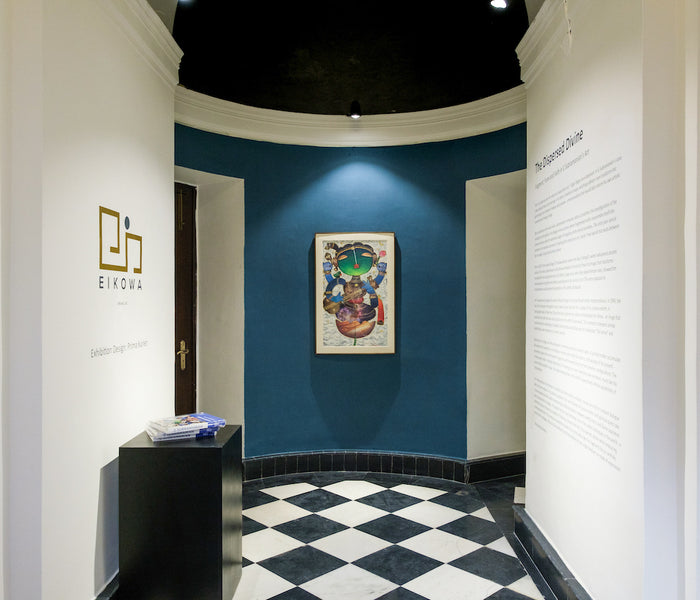The Dispersed Divine | G Subramanian Solo | Bikaner House
"Art is not what you see, but what you make others see," Edgar Degas once observed. In G Subramanian's case, it was perhaps those early evenings in his father's theatrical troupe, watching ordinary men transform into gods through the alchemy of makeup and costume - a metamorphosis that would later inform his own artistic transmutations through collage.
Like an alchemist of the visual realm, Subramanian's artworks invite us to witness the transfiguration of the mundane into the mythical. His collages serve as portals where fragmented reality reassembles itself into coherent dreams, where the ephemeral pages of magazines birth eternal narratives. The artist pays special attention to this numinous presence, recognizing the importance of a 'secret' inner world that exists between the torn edges of paper and painted surfaces.
Born in 1952 in the coastal village of Thandavankulam, where the Bay of Bengal's waters whispered ancient stories to the shore, Subramanian's early life was steeped in the kind of theatrical magic that transforms everyday life into sacred performance. His father, a stage actor who often played female roles, showed him how boundaries of gender and identity could dissolve in the service of art. This early exposure to transformation would become the foundation of his artistic philosophy.
Yet it was personal tragedy that would ultimately forge his most profound artistic metamorphosis. In 1994, the loss of his nine-year-old daughter Surya to bone cancer became the crucible of his creative rebirth. A photograph taken on New Year's Day of that year captures her radiant smile despite her illness - an image that would become both talisman and touchstone for the artist's future work. This moment of deepest sorrow transformed into a wellspring of creativity, birthing what would become his celebrated "She Series" and establishing a new trajectory in his artistic journey.
Subramanian's collages are like palimpsests of memory and desire, where layers of printed matter accumulate like sediments of experience. His technique involves what might be called a 'archaeology of the present' - excavating images from contemporary magazines and reassembling them into timeless configurations. The resulting works exist in multiple dimensions of meaning, each layer revealing new narratives, much like the ancient Hindu concept of maya - the understanding that reality itself is layered with infinite possibilities of interpretation.
His metamorphosis from painter to collagist, and eventually to sculptor, reveals an artist in constant dialogue with form and medium. In his bronze sculptures, the same themes of transformation and spiritual quest take on three-dimensional life, while maintaining the delicate balance between earthly form and divine aspiration that characterizes his collages. He adopts the lost wax technique, one of the oldest techniques in the world - a deliberate choice to honor the tradition of Nataraja statues from the Chola period, all the while embracing contemporary forms. This continuous evolution speaks to an artist who, like the fragments he so carefully selects for his collages, refuses to be confined by the boundaries of any single medium or mode of expression.
































